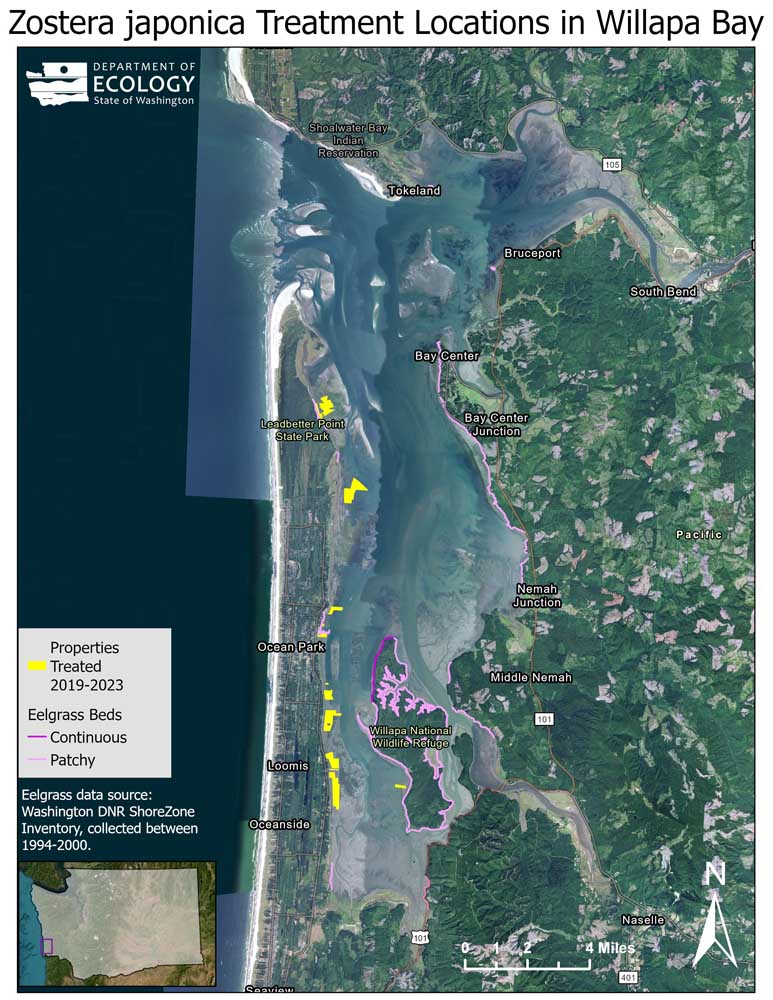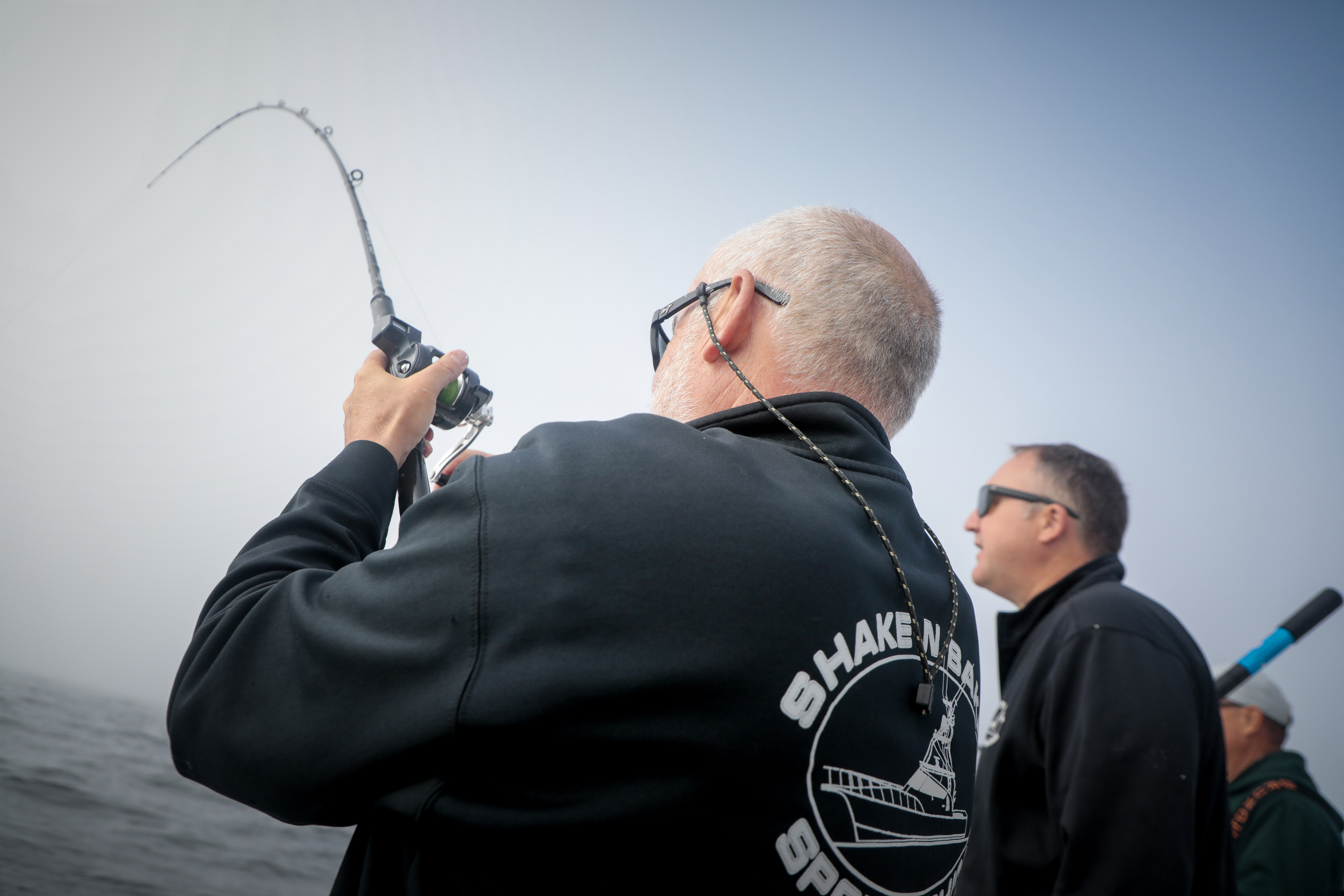State plans changes in permit for spraying japonica in Willapa Bay
Published 8:13 am Thursday, December 5, 2024

- A satellite photo shows areas of Willapa Bay where non-native eelgrass is controlled with a herbicide.
NAHCOTTA — The invasive species Zostera japonica (sometimes called Japanese eelgrass or dwarf eelgrass) has been a problem for commercial growers of clams in Willapa for years and state regulators plan changes in a permit to control it.
Trending
In a blog post and press release, the Washington Department of Ecology says it is hosting two public workshops and hearings on a draft permit to treat clam beds with the herbicide imazamox, which has been used in the bay since 2014.
The permit to control japonica using imazamox is limited. It is only for commercial clam growers in Willapa Bay and it does not apply to geoduck or oyster beds. Registered by the U.S. Environmental Protection Agency for aquatic uses, EPA categorizes this herbicide as a reduced risk pesticide (their lowest toxicity category), meaning any amount of imazamox found in or on food products is not considered a human health risk, Ecology said in its blog. “Imazamox is only toxic to plants and is considered practically non-toxic to animals, fish, invertebrates, and other non-plant aquatic species,” the agency said.
At the workshop, agency staff will explain the draft permit and answer questions about changes in the permit. The hearing will provide an opportunity for the public to provide formal oral testimony and submit written comments on the draft permit. Oral testimony will receive the same consideration as written comments. The public hearing will begin immediately following each workshop and will conclude when testimony is complete.
Trending
An online public workshop and hearing are scheduled Dec. 30 starting at 2 p.m. Register for the online meeting at tinyurl.com/Japonica-Zoom. The in-person workshop and hearing is set for Jan. 7 at 6 p.m. at the Willapa Harbor Community Center, 916 W First St., South Bend. Written comments may be sent to Shawn Ultican, WA State Department of Ecology, P.O. Box 47696, Olympia, WA 98504-7696.
After the close of the public comment period at 11:59 p.m. on Jan. 14, the agency will prepare a response to comments and describe any changes to the draft permit, and make a decision on permit reissuance by spring 2025, when the Ecology agency plans to give its go-ahead.
The Noxious Weed Control Board listed Zostera japonica as a noxious weed in 2012. This noxious weed is non-native and causes significant impacts on clam aquaculture and harvest for the shellfish industry in Willapa Bay. It is classified as a Class C noxious weed, the lowest category of noxious weed, that are generally present over a large area in Washington. Once japonica was listed as a noxious weed, commercial clam growers requested we issue a permit to allow the use of an aquatic herbicide for the control of the plant.
Eelgrass, or sea grasses, are plants found in brackish or marine water that form highly productive ecosystems. They tend to stabilize sediment, and provide food, shelter, and nursery areas for many types of marine animals. Several permit requirements are designed to protect the important native eelgrass, Zostera marina. These permit requirements include limiting the application rate of imazamox to no more than 1.4 ounces per acre, allows only one treatment each year, and prohibits imazamox application in drainages that are flowing to areas containing native eelgrass.
Over the last five years, an average of 82 acres of clam beds have been treated each year. The total area of Willapa Bay is around 80,000 acres, with approximately 8,000 acres covered by the native eelgrass Z. marina, and about 6,000 acres covered by the invasive eelgrass Z. japonica.









